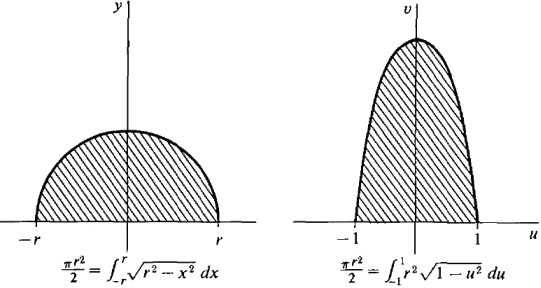By using abstraction, an infinite curvature has exactly 0-dimesional space, where 0-dimensional space can be at one and only one location w.r.t a give domain.
This is not the case about 1-demensional space (weather it is curved or straight), because by define it as an element (an atom) w.r.t a given domain like 0-dimnsional space, it can be at
AND not at the given 0-dimnsional space location (where the given 0-dimnsional space is also an atom).
I used the words "host" (for the relation of 1-demensional space w.r.t a given 0-dimnsional space) and "hosted" (for the relation of 0-demensional space w.r.t a given 1-dimnsional space) in order to clarify that these dimensions are verbally_symbolically defined as non-local\local w.r.t each other, but they are not made of each other visually_spatially since they are elements (atoms).
So, the "host"
AND "hosted" notion actually known only by using verbal_symbolic
AND visual_spatial skills in order to really define the relations among different dimensional spaces.
Verbal_symbolic-only skill(ers)' reasoning can't get the invariance of the atomic state of the relations among different dimensional spaces.
Furthermore, they force their context-dependent-only "packed in boxes" reasoning on the entire population, at least for the past 500 years.
One of the devastating results of context-dependent-only "packed in boxes" reasoning is its built-in inability to grasp and develop a unified comprehensive and balanced framework for our ethical and logical\technological skills.
The results of this inability are daily seen by the race after mass destruction weapon, exactly because of the non-unified and imbalanced framework among our ethical and logical\technological skills.
Take, for example, the Iran case.
If it is fulfilled, then you can say good-bye to the rest of the life-supporting technological results of the past 5000 years.
Another devastating results are the technological developments, winch harm planet Earth's Ecosystem, exactly because these technologies are based on imbalanced minds, which can't comprehend the development of the unified framework among our ethical and logical\technological skills, which can't be achieved without using verbal_symbolic
AND visual_spatial skills as a one comprehensive framework.
After 9 years of discussion over the internet, it is clear that the current community of mathematicians uses almost only verbal_symbolic skills and as a result they can't comprehend
http://www.internationalskeptics.com/forums/showpost.php?p=7676943&postcount=5 or this post.
Without Cross-contexts
AND Context-dependent framework development, we are going to be impacted very quickly by the imbalanced framework that was developed for the past 5000 years mostly by verbal_symbolic_only skill(ers) (this imbalanced development was accelerated for the past 500 years).









